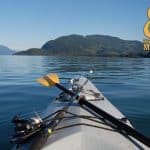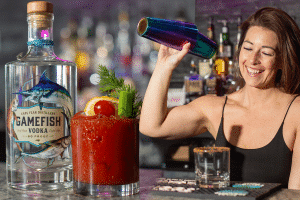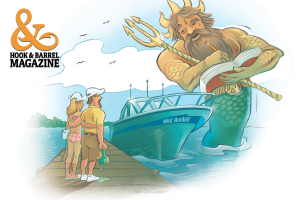- By Matt Meltzer

If one sport defined the coke-fueled glam of the 1980s, it was offshore performance boat racing. Playboy Don “Donzi” Aronow, surrounded by bubbly-headed, bikini-clad models, became the sport’s enduring image. Its most celebrated racers were Sal Magluta and Willy Falcon, a couple of guys who gained even more fame for their cocaine empire. The fast boats and shady characters who populated the sport filled the pits epitomized the 1980s fast lane lifestyle, awash with speed, sex, and showmanship.
But as the excessive ‘80s gave way to the grungy ‘90s, the world of offshore racing fell off. Races still existed, but with the drug money gone and the rise of NASCAR and Formula One auto racing, the public’s attention turned elsewhere.
But on the turquoise waters around Florida and in the Great Lakes of Michigan and Wisconsin, the sport is making a comeback. Though the parties aren’t what they were 40 years ago, and coke money replaced by corporate dollars, it’s still one of the most adrenaline-pumping spectacles one can witness live. And it offers access to its drivers, pits, and race courses no other motorsport can match.
A world built by smugglers now sponsored by insurance companies.
Offshore racing became so intertwined with cocaine smuggling because the sport was literally built on drug money. “A lot of the money came from (smuggling),” says Larry Bleil, owner of Race World Offshore, who produces and promotes six of the nine races in the P1 Offshore race series. “What people don’t realize is that’s what started offshore power racing. It started because the boats were fast, and then it just carried on from there. That’s really where performance boats started out, was from the smuggling days and bringing stuff back and coming off the shrimp boats and loading off on the ocean. I saw a lot of it and I…it was very, very prevalent.”
So prevalent, in fact, that when Bleil began promoting races a few years ago, someone suggested to him a competition event, where speedboats would race to a barge, load packages on it, and see who could do it the fastest. “The Coast Guard wouldn’t like that,” he says. “We’re trying to fight all that, right? You know, the Maglutas and all those boys, they were racing hard and racing strong, spending a lot of money. But those days are over. You wondered where all the money came in, but then it eventually fell away. And now it’s a hundred percent legitimate sport.”
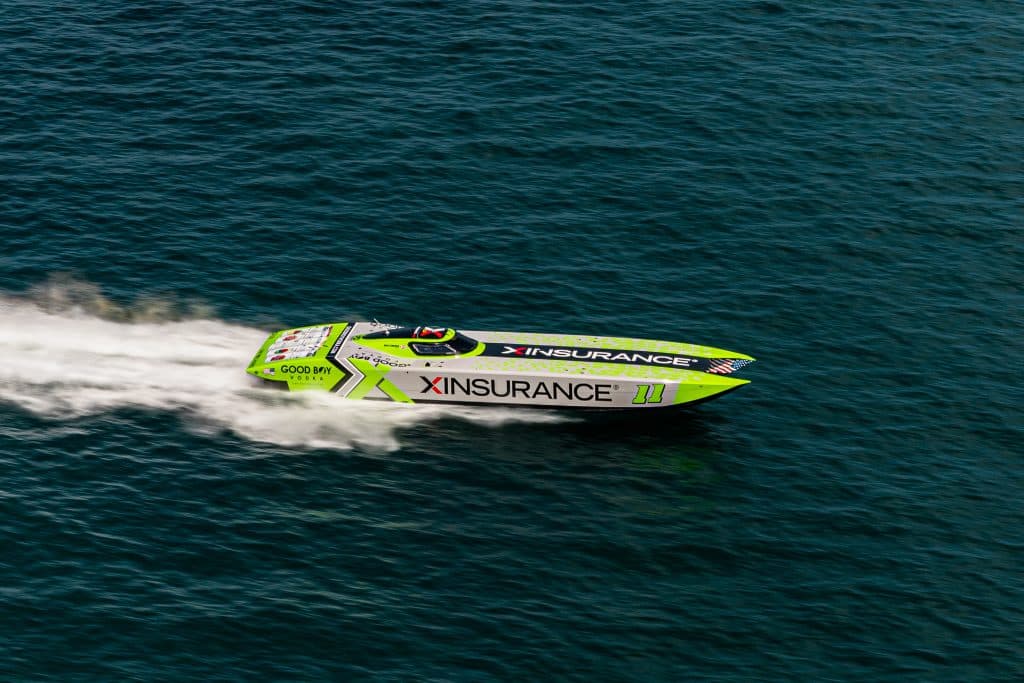
One needs look no further than the companies sponsoring racing teams to see that offshore racing’s vice era is a thing of the past. Rather than cartels, powerboats are now sponsored by corporations and insurance companies. “Boats are more interesting to me than NASCAR, and I can have a bigger footprint on the people we bring,” says X Insurance CEO Rick Lindsey, who also heads up the company’s racing team and films races from a helicopter. “It’s marketing; you’re getting your brand out there.”
It’s also a keen bit of advertising.
“We do a lot of races in Florida, right?” Lindsey says. “And the Florida homeowners market, I mean there’s 13 companies that went broke last year, so it’s very difficult for people. So people see us (at races), and they think of us, and call us for their homeowners.”
Multiple-day events with unmatched accessibility.
The nine races that make up the P1 Offshore racing circuit begin in Melbourne, Florida, in April with one or two races a month until the World Championships in Key West in November. Speed boats in all classes from small outboard vessels to thundering SuperCATS race over three days, and spectators can just saunter up to the water’s edge and take in the action. “It’s a fan-friendly sport,” Bleil adds. “People can walk out and watch a race for free. They can walk into the pits and talk to the crews, the drivers, the mechanics. They’ll even give ‘em shirts.”
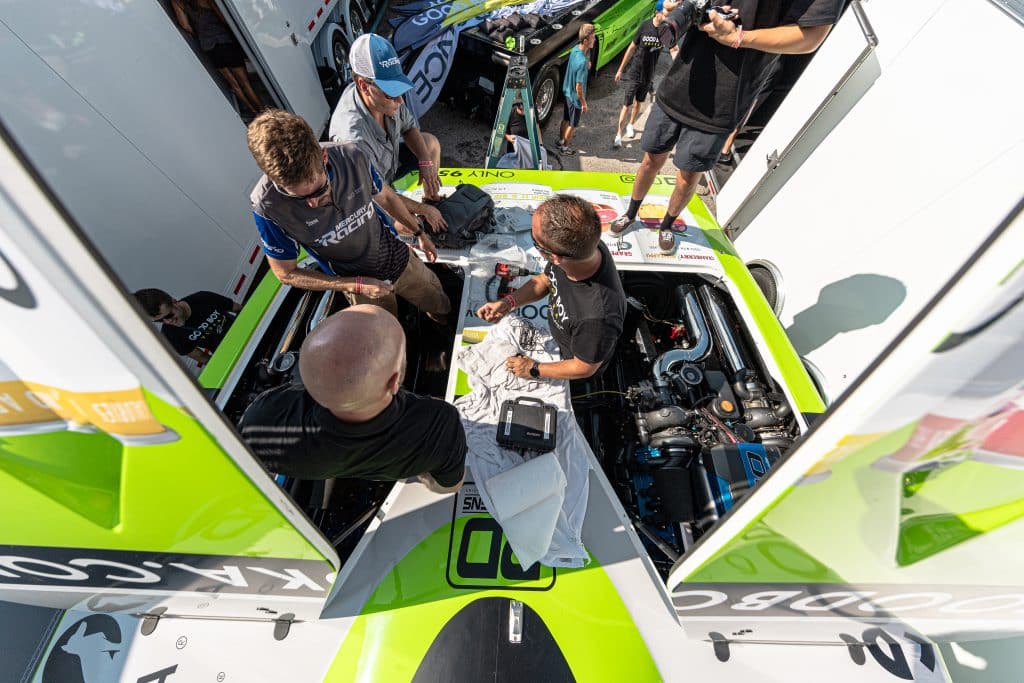
The drivers—offshore racing’s rock stars who keep the image of the last real glam sport alive—are still happy to chat with fans throughout the weekend, too. “During a race, we’re very approachable,” says Miles Jennings, a British offshore driver with long, silver hair who lives in Ibiza when he’s not on a boat. “It’s not like a Formula 1 race where you’re pinned up in your paddock and nobody gets in. In our series, everybody can come along, and we always allow time to see them. It’s the least we can do.”
Race teams, which consist of a driver, the throttle man, mechanics, and pit crews, are sponsored by various corporate entities. Monster Energy is the latest entrant, but they run the gamut.
Courses are set just offshore, with loops typically around five miles with two-to-three mile straightaways. Smaller boats will run anywhere from four to six laps, faster boats will run up to 12.
Multiple divisions will also race at the same time, so you may see a SuperCAT blowing away a smaller boat and wonder why they’re on the course at the same time. Starts are staggered, but Bleil says after about seven laps boats begin lapping each other, so spectating can get a little confusing. “You got boats that are turning 160 miles an hour, and you got boats running 110, and 50 miles an hour is a big difference,” he says. “So we’re working on that, it takes time.”

X Insurance’s Lindsey says that because the events offer such great accessibility, they’re a big draw for sponsors. They can invite potential clients and business partners and give them an insider’s, VIP experience easily, something he could never do with NASCAR.
Events draw anywhere from a few thousand fans for early-week qualifiers to literally hundreds of thousands in Michigan City. But the sport’s keystone event will always be Key West.
Up close and personal with the loudest boats on the water.
Offshore racing events aren’t just what happens on the water. Race weekends are multi-day festivals, complete with parties and boat parades.
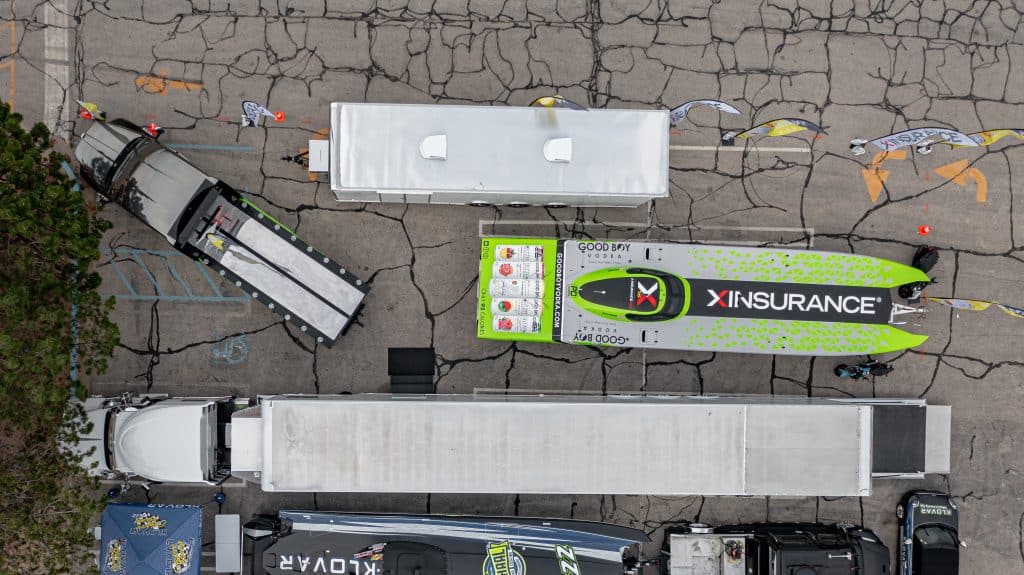
The Friday before the World Championships, Key West shuts down Duval Street, and fans line the sidewalks to see the boats as they parade through. “It’s the biggest party in Key West; it’s absolutely incredible,” marvels Bleil. “It’s out of this world; there are parties everywhere.”
But Key West isn’t king just because of its parties. It also offers the closest vantage points to watch the races and feel the power of the herculean vessels speeding by. “You go to Mallory Square, and you can stand along the seawall and be blown away by a boat going so fast, so beautiful,” says Bleil.
“Key West is a great one,” adds Jennings, who currently races for the X Insurance team. “Spectators can watch boats pass at 160, 170 miles an hour like 30 or 40 feet from the shoreline. You see that big plume of spray thrown up behind and the noise of the twin engines rumbling. It’s very adrenaline rushing.”
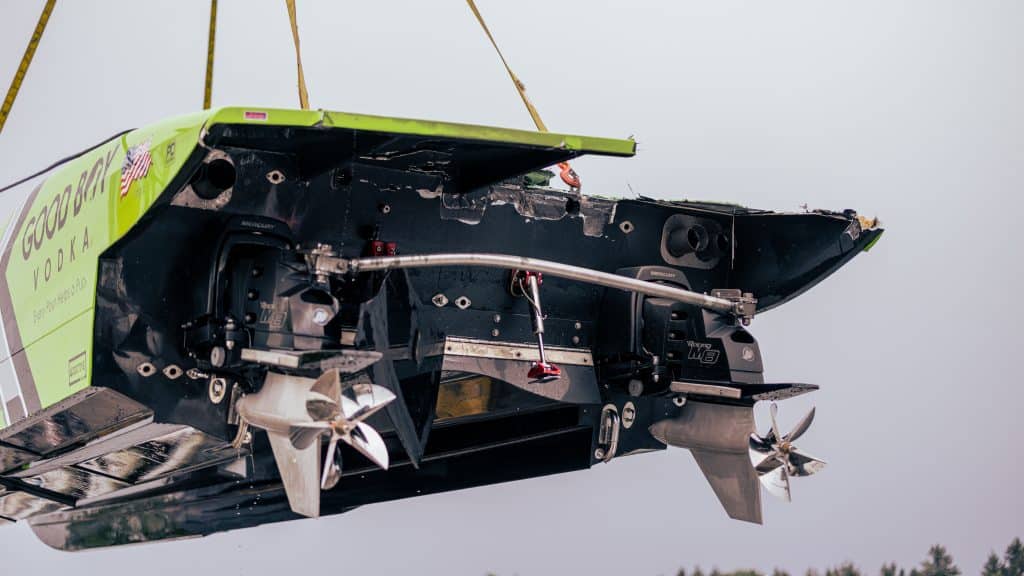
Real professionals racing for the love of racing.
One of the main reasons the sport is so accessible is that everyone involved is doing it for the love of performance boat racing. While drivers are paid by the racing teams, there hasn’t been prize money in the sport for years (though Jennings says P1 is adding some purses this year). The racing teams are funded purely by sponsorships, mostly taking the venture as a marketing expense. “People do it because they love it,” says Lindsey. “There’s a team from Australia that comes all the way here to race, flies his whole team over. There’s no money in it, he’s just raced all his life and wants to race here, because this is some of the best racing in the world.”
Though the parties aren’t the all-night ragers they were 40 years ago, the now-legitimate world of offshore racing still has its wild side. “It’s pretty much the last of the glamor sports,” Jennings says. “It’s like Formula 1 racing was 30 years ago, and it does have a glamorous image because of the product being sold. And with that comes parties, because they’ve gotta be in the right environment to sell that product.”
He says this varies considerably from the “Don Johnson” era, as the offshore teams are professionals who aren’t only there for a good time. “You’ll see the professionalism in the teams, the mechanics working hard to tune the boats to perfection to get the balance of the boat right, to get the propellers, the shafts, the gear ratios,” Jennings continues. “There’s so much that can make milliseconds on a course so there is a really high level of professionalism.”
Offshore racing gets bigger and better.
Bleil didn’t expand much on his plans for offshore racing, other than to say it just keeps getting “bigger and better.” The cost of his first Key West race in 2019 was $380,000. The most recent one in 2022 was $1.2 million. “I understand why people don’t do it, because it costs so much money,” he says. “But we got a good template in Key West, so we’re just gonna keep growing and working on other cities to move forward and not be stagnant.”
So while the ’80s aren’t exactly living on in the world of offshore racing, going out to a race is still an exciting time. With more accessibility than auto races, sunshine, and ear-splitting engines, it may be one of the most underrated spectator sports in America.







